A war begins: How the 1971 Indo-Pakistan conflict led to the liberation of Bangladesh
It was 51 years ago today (3 December 1971) that Pakistan launched multiple air raids on the Indian Air Force (IAF) bases and radar stations in the Western Sector, leading to a war between the two nations and the creation of a third – Bangladesh

1/10
It was 51 years ago today, 3 December 1971, that Pakistan launched a military offensive against India, leading to a third war between the two nations. It was this Indo-Pak War that led to the creation of a new country – Bangladesh. The war lasted 13 days with the surrender of the Pakistan Army on 16 December. AFP File Photo

2/10
On the eve of 3 December 1971, the Pakistan Air Force (PAF) launched a series of air strikes against Indian Air Force (IAF) bases in the Western Sector, including Punjab, Jammu and Kashmir, Haryana and Rajasthan. In retaliation, the IAF launched air raids on PAF’s air bases and radar stations in Murid, Mianwali, Risalewala, Rafiqui, Sargodha, Chandher and Masroor. AFP File Photo

3/10
This was the first war that saw all three Indian defence forces – the Army, Navy and Air Force – fighting unitedly in several theatres. The 1971 Indo-Pak War showcased India’s military might and the victory is celebrated as Vijay Diwas on 16 December. AFP File Photo

4/10
It was the only war fought by India that saw heavy fighting in both the eastern and western sectors. Notably, three out of the four Param Vir Chakras for the 1971 war were awarded to Flying Officer Nirmal Jit Singh Sekhon, Major Hoshiar Singh and Second Lieutenant Arun Khetarpal, who fought in the western sector. Lance Naik Albert Ekka received the fourth award for his valour in the eastern theatre. AFP File Photo
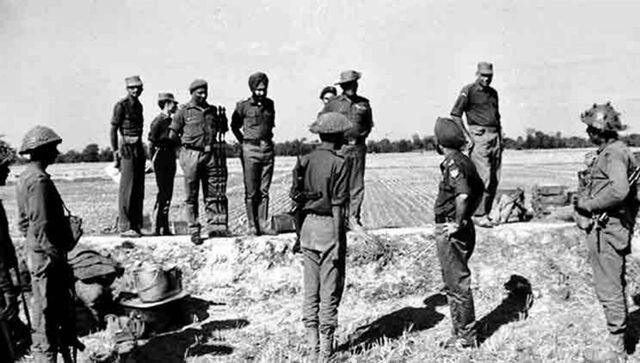
5/10
It was on 25 March 1971 that the Pakistan military had begun a violent crackdown in Dhaka, East Pakistan (now Bangladesh). Amid the violence, Awami League Party’s Sheikh Mujibur Rahman declared independence for Bangladesh, setting off a nine-month-long conflict. After Pakistan’s attacks on 11 Indian airbases in December, the Indian side joined the war. AFP File Photo
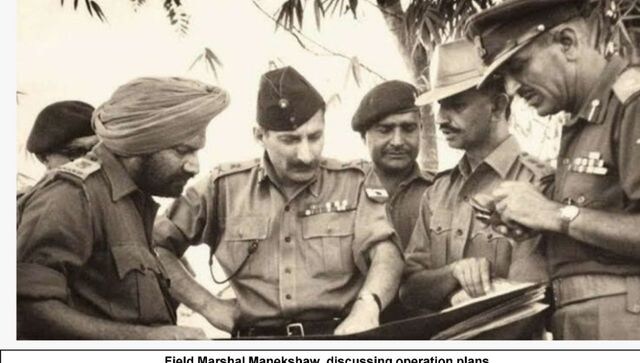
6/10
Field Marshal Sam Hormusji Framji Jamshedji Manekshaw, also known as Sam Bahadur, was the Indian Army chief during the 1971 war, and is highly credited for the momentous victory. He had reportedly told then-prime minister Indira Gandhi: “my job is to fight, fight to win”. Twitter/@rajnathsingh File Photo
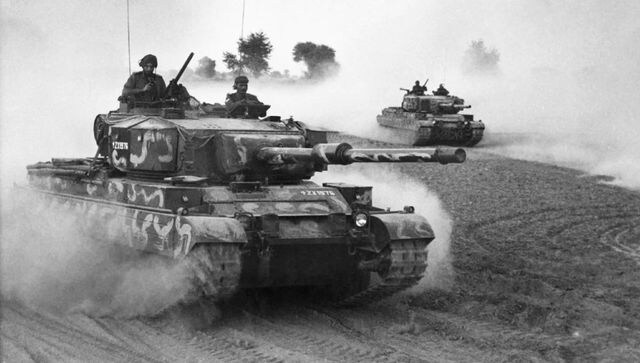
7/10
India formally declared war against Pakistan in the wee hours of 4 December. On the intervening night of 4 and 5 December, the Pakistan forces consisting of 4,000 soldiers and over 40 tanks attacked the Longewala border post in Rajasthan. However, then Major Kuldip Singh Chandpuri along with just over 100 soldiers defended the post against the Pakistani troops. The war in Basantar and ‘Tangail Operation’ also established the prowess of the Indian military in the 1971 war. AFP File Photo

8/10
The official death toll of the nine-month-long Bangladesh Liberation war was estimated to be between 3,00,000 and three million people, while thousands of women were raped. This was one of the most heinous acts of genocide by Pakistani troops that had started with Operation Searchlight, the bloody crackdown launched in March 1971. AFP File Photo
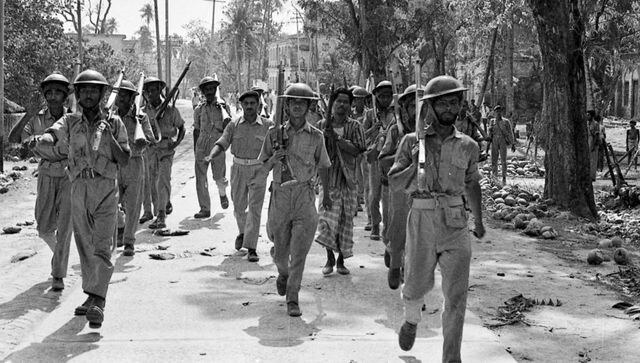
9/10
Then Navy chief Admiral SM Nanda is credited for India’s success in the naval operations against the Pakistani troops. According to the IAF, its tasks on the western front were “disruption of enemy communications, the destruction of fuel and ammunition reserves, and the prevention of any ground force concentrations” to deter attack against the Indian forces. AP File Photo
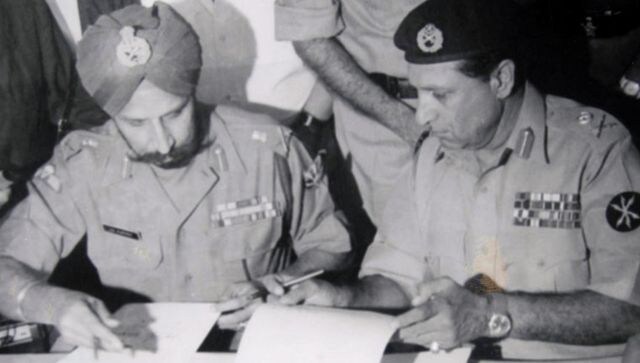
10/10
The 1971 war came to an end on 16 December with the surrender of around 93,000 Pakistani soldiers and government officials, led by Lt General AAK Niazi, commander of East Pakistan. This was the largest surrender by an army since World War II, and it led to the creation of Bangladesh. AFP File Photo
